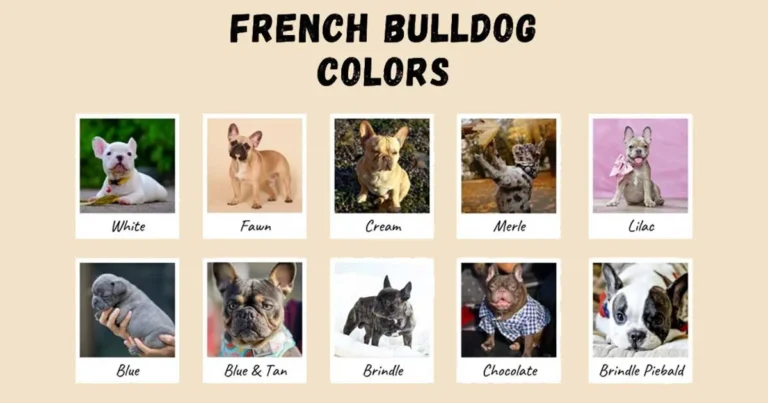Grey French Bulldog: Traits, Cost, Care & Breeder Tips
Grey French Bulldogs aren’t just a color variation — they’re a growing obsession among breed lovers worldwide. With their shimmering coats and iconic bat ears, these pups have captured hearts on Instagram and in high-end homes alike.
But what makes the Grey French Bulldog so special? Is it just the color, or is there more beneath that silvery exterior? This article breaks down everything you need to know — from genetics and appearance to pricing and breeder ethics.
Whether you’re curious about their rarity or seriously considering adding one to your family, this complete guide has you covered. Let’s explore what makes this beautiful breed a standout.
- Discover what sets the Grey French Bulldog apart from other color types
- Understand the genetics behind their rare coat
- Learn about pricing, rarity, and how to find a healthy pup
- Explore common features and variations in appearance
- Get tips on buying from ethical, health-conscious breeders
Let’s dive into the complete story of the Grey French Bulldog — beauty, genetics, and beyond.
What is a Grey French Bulldog?
A Grey French Bulldog is a color variation of the standard French Bulldog, known for its cool-toned silver, slate, or blue-grey coat. While the breed standard doesn’t recognize this coat color for show, it remains one of the most sought-after versions of the breed due to its rarity and striking beauty.
Despite the color difference, Grey French Bulldogs are identical in personality, size, and build to other Frenchies. They have the same playful, affectionate temperament, compact muscular bodies, and that unmistakable squishy face and “bat ear” look.
The term “grey” is often used interchangeably with “blue” in the Frenchie community. This label refers to a specific diluted black pigment, which gives the coat its cool tone. It’s a visual standout, making these dogs social media stars.
- Not a separate breed, just a unique color variation
- Same temperament and behavior as all French Bulldogs
- Often labeled as “blue” in the dog community
- Coat ranges from silvery grey to bluish slate
- Not show-eligible but highly desirable as companions
Grey French Bulldogs offer all the love of a standard Frenchie, wrapped in a luxurious and rare coat.
Genetics Behind the Grey Coat
The grey coat in French Bulldogs is caused by the D-locus dilution gene. When a dog inherits two copies of this gene (dd), the black coat pigment is diluted, producing the grey or blue-grey appearance that defines this variant.
Breeding for this color requires precision and responsibility. Both parent dogs must carry the dilute gene to produce grey puppies. Ethical breeders pair dogs based on both color genetics and overall health to avoid long-term issues in offspring.
Improper breeding for color alone can result in health problems, such as Color Dilution Alopecia (CDA). To prevent this, breeders use DNA testing to ensure healthy combinations, making science an essential tool in grey Frenchie breeding.
- Caused by the double copy of the dilute gene (dd)
- Both parents must carry the D-locus mutation
- Breeders must prioritize health along with color
- DNA testing confirms dilute gene presence
- Improper breeding may lead to skin and coat issues
Understanding the genetics helps you choose a Frenchie responsibly — not just beautifully.
Temperament and Behavior
Grey French Bulldogs may look luxurious, but at heart, they are affectionate, playful, and people-oriented dogs. They thrive on human attention and love being part of the family routine. Whether it’s lounging on the couch or joining a walk, they want to be involved.
Their temperament is typically calm, making them great companions for apartment living or smaller homes. Grey Frenchies are known for being gentle with children and sociable with other pets when properly socialized from an early age.
Despite their compact size, they have bold personalities. Some can be a little stubborn during training, but with consistency and positive reinforcement, they become well-mannered and loyal companions.
- Naturally affectionate and eager to bond with humans
- Calm demeanor suits indoor and apartment lifestyles
- Sociable with kids and other pets when socialized early
- Can show stubborn streaks; respond well to positive training
- Thrive best in homes with consistent routines and attention
Their charming personality makes them not just beautiful pets—but true companions for life.
Exercise and Activity Needs
Grey French Bulldogs may have a muscular build, but they are not high-endurance dogs. Their short snouts (brachycephalic structure) limit their ability to breathe efficiently during intense activity, which means their exercise needs are moderate rather than rigorous.
Daily short walks, light indoor play, and mental stimulation are ideal. Overexertion, especially in hot weather, can lead to respiratory distress. It’s important to watch for signs of fatigue or overheating and always provide access to shade and water.
Interactive toys, short fetch sessions, and social time with humans or other dogs work well to keep them happy. While they enjoy activity, they equally love lounging — balance is key for their overall health.
Physical Appearance and Coat Variations
Grey French Bulldogs typically have a short, sleek coat that can range from light silver to deep slate or steel blue. Some may exhibit patterns like brindle or pied, while others are solid-colored with a glossy sheen.
Their eyes are often striking, ranging from icy blue to soft amber or hazel, which enhances their exotic look. Due to the dilution gene, features like their nose, paw pads, and eye rims may appear lighter in pigmentation.
Physically, they share all the hallmarks of the French Bulldog breed — stocky, compact bodies, muscular frames, and the iconic large bat ears. The grey coat simply adds a layer of beauty to an already adorable structure.
- Coat colors include light silver, charcoal, and blue-grey
- May have brindle, pied, or solid color variations
- Lighter eye colors such as amber, blue, or hazel are common
- Dilution gene affects nose and paw pad pigmentation
- Retains full standard French Bulldog body traits
They turn heads not just because of color, but their undeniable Frenchie charm.
Are Grey French Bulldogs Rare
Yes, Grey French Bulldogs are rare, primarily because both parents must carry the dilution gene to produce this coat color. Breeding two carriers of the recessive gene doesn’t always guarantee grey puppies, which adds to the exclusivity.
Their rarity is amplified by demand. Many people are captivated by their aesthetic, driving up their popularity and market value. However, responsible breeders don’t overproduce grey litters just to meet demand, which keeps numbers low.
Due to their limited availability and high demand, grey Frenchies are not common in shelters or rescues. This exclusivity makes them even more attractive to buyers seeking a unique pet.
- Requires specific genetics, making them less common
- High demand due to aesthetic appeal
- Ethical breeders produce fewer litters intentionally
- Rarely available in adoption or rescue centers
- Frequently featured on social media and luxury pet circles
Their rarity adds to their allure, making them a prize among Frenchie lovers.
How Much Does a Grey French Bulldog Cost?
The cost of a Grey French Bulldog typically ranges from $4,000 to $7,000, though some may fetch prices over $10,000, especially if they come from champion bloodlines or carry rare patterns like merle or fluffy coats.
Several factors influence price: health-tested parents, pedigree, breeder reputation, and geographical location. Puppies from high-end breeders with DNA-verified lines usually demand a premium price.
Many grey French Bulldogs are reserved before birth, with long waiting lists for preferred traits. Buyers must prepare financially and plan in advance to secure one from a responsible source.
- Average price: $4,000–$7,000, may go higher
- Pedigree and champion lines increase cost
- DNA testing and health screening add to price
- Breeder experience and location impact pricing
- Waitlists common due to demand and low supply
Investing in a grey Frenchie means you’re paying for both rarity and quality assurance.
Pros and Cons of Owning a Grey French Bulldog
Owning a Grey French Bulldog has many perks, especially if you love low-maintenance dogs with a stylish edge. They are affectionate, adaptable to small spaces, and require minimal grooming.
On the downside, their unique coat doesn’t shield them from the typical health concerns of the breed. Respiratory issues, joint problems, and skin sensitivities still require attention, especially in color-focused litters.
Additionally, the high cost and ethical breeding challenges mean potential owners should be cautious. Do your research and understand the full commitment before diving in.
- Pros: Low grooming needs and affectionate personality
- Cons: Prone to brachycephalic-related health issues
- High price may not be feasible for all budgets
- May face Color Dilution Alopecia (CDA) risks
- Ideal for city living and apartment environments
Weighing the pros and cons will help you decide if this beautiful breed fits your lifestyle.
Grey French Bulldog Popularity & Demand
Grey French Bulldogs have exploded in popularity thanks to social media, celebrity pet owners, and the breed’s naturally photogenic look. Platforms like Instagram are full of silver-coated Frenchies gathering thousands of likes.
Their exotic color and playful behavior make them favorites in urban and influencer circles. People love how they stand out, both visually and in personality, making them feel exclusive.
That said, their fame has a downside: increased interest has led to unethical breeding and overpricing. It’s important to choose reputable breeders despite the trending status of grey Frenchies.
- High social media presence boosts demand
- Popular among celebrities and influencers
- Often featured in fashion-forward pet content
- Trendiness leads to increased backyard breeding
- Buyer beware: popularity ≠ quality breeding
Their fame may be widespread, but your choice should be grounded in responsible ownership.
Tips for Buying from Reputable Breeders
Choosing a trustworthy breeder is the most important step in bringing home a healthy grey French Bulldog. Always ensure that the breeder conducts genetic testing and screens for breed-specific health conditions.
Look for transparency—responsible breeders will show you the puppies’ living conditions, health certificates, and parent dogs. Avoid anyone who refuses video calls or in-person visits.
A long waitlist is usually a good sign. Ethical breeders breed sparingly and for quality. Be wary of quick deals and unusually low prices — these are often signs of scams or poor breeding.
- Ask for DNA tests confirming the dilute gene
- Confirm health clearances for hips, heart, and eyes
- Visit breeder facilities or request live video proof
- Avoid breeders with multiple litters available at once
- Read reviews and ask for references from past buyers
A little due diligence now can save you from heartbreak and expense later.
FAQs
- Are Grey French Bulldogs the same as Blue French Bulldogs?
Yes, they’re often referred to as “blue,” but the color appears more grey due to genetic dilution of black pigment. - Are Grey French Bulldogs recognized by the AKC?
While they can be registered, grey isn’t a standard show color and isn’t accepted in AKC conformation events. - Do Grey French Bulldogs require special care?
They don’t need special care for their coat but should be monitored for typical Frenchie health concerns. - Can I adopt a Grey French Bulldog from a rescue?
It’s rare, but possible. Most are purchased through breeders due to their exclusivity and demand.
Conclusion
The Grey French Bulldog is more than just a pretty coat — it’s a fascinating blend of genetics, charm, and rarity. From their distinctive appearance and lovable nature to the care needed in breeding, these dogs represent a special niche in the Frenchie world.
Their growing popularity is well-deserved, but it comes with responsibility. Understanding the genetic background, pricing structure, and health implications is essential before welcoming one into your home.



